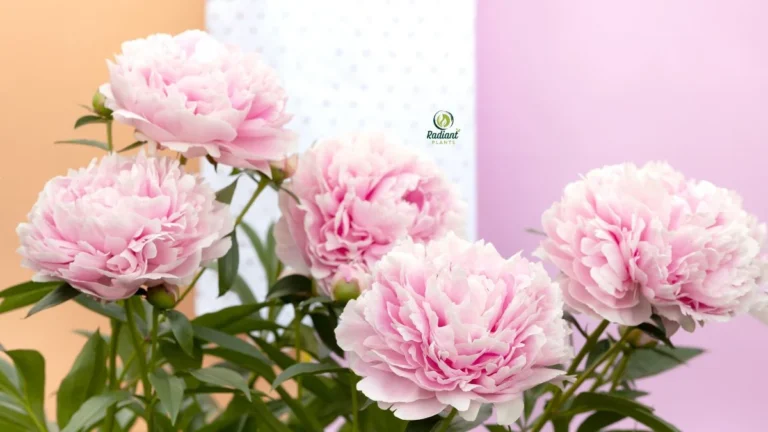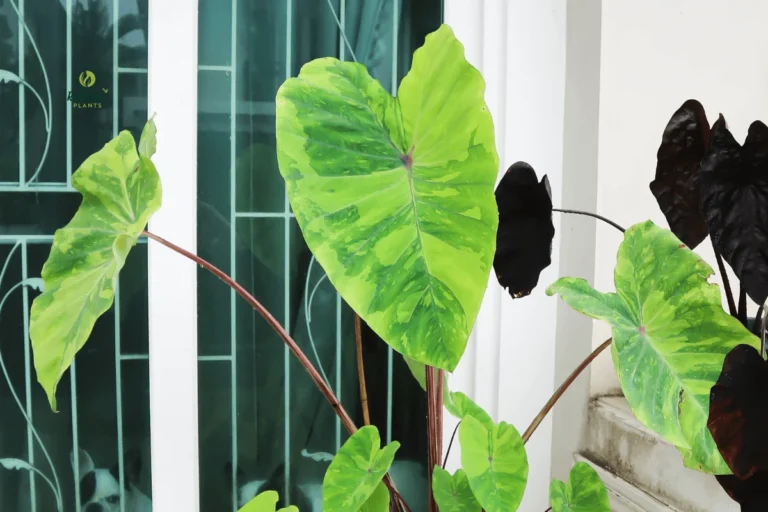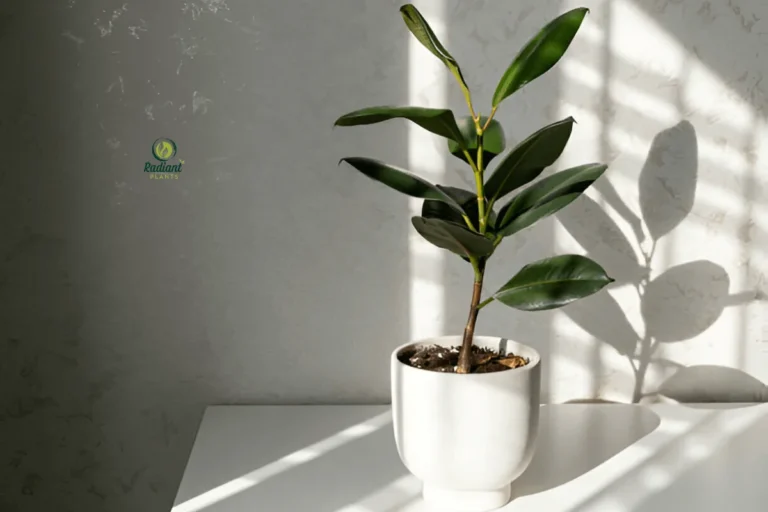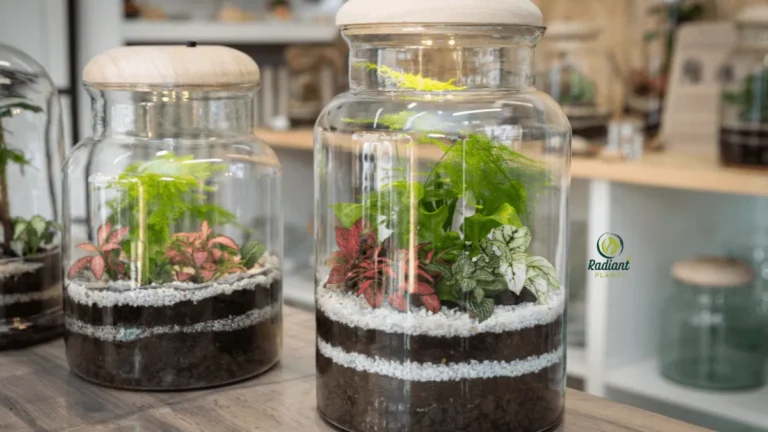4 Leaf Clover Plant: How to Grow This Charming Lucky Icon
If you’ve ever wished for a little extra luck in your home, the 4 Leaf Clover Plant might be the charming green icon you’ve been searching for. Despite the name, this plant isn’t just a rare find from an Irish meadow—it’s a beautiful, easy-to-grow ornamental that brings color, character, and a touch of whimsy to any space. With its rosy-pink blooms and signature four-part leaf pattern, it stands out as one of those plants that feels instantly uplifting.
In this guide, you’ll learn exactly how to grow and care for the 4 Leaf Clover Plant—from the right lighting and watering routine to understanding its unique dormancy cycle. You’ll discover why this plant is often associated with luck and positivity, how to prevent common issues like drooping or yellowing leaves, and how to propagate new clumps so you can share the good fortune with friends.
Whether you’re styling a sunny windowsill, refreshing your indoor plant collection, or simply drawn to its symbolism, this article will help you keep your 4 Leaf Clover Plant thriving and vibrant all year long.
Table of Contents
Table of Contents
What Is a 4 Leaf Clover Plant?
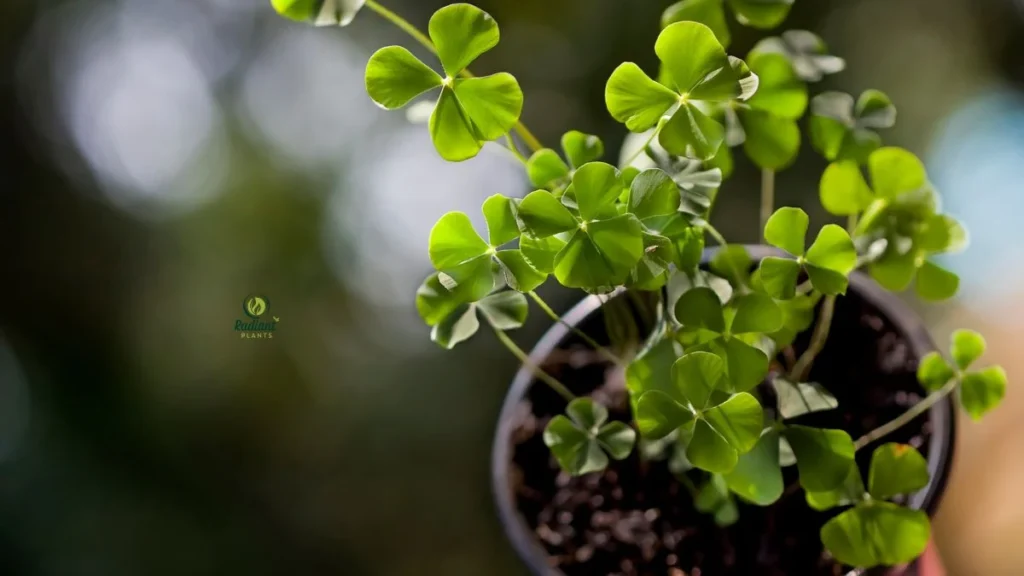
If you’ve ever spotted the name 4 leaf clover plant at a nursery or online shop, you might assume it’s the same rare clover mutation people hunt for in grassy fields. But here’s the truth: the plant sold under this name is not a true clover at all. It’s actually Oxalis tetraphylla, a charming ornamental species known for its four-part leaves, bright color, and symbolically “lucky” look. This distinction is one of the biggest sources of confusion for beginners, so it’s worth understanding early.
So, is the 4 leaf clover plant real? Yes—just not in the way most people imagine. True clovers (genus Trifolium) only develop four leaves through a rare genetic mutation, occurring in roughly 1 in 5,000 plants, according to botanical field studies. By contrast, the Oxalis plant naturally produces four leaflets on every stem, which is why it’s widely marketed as the lucky clover plant.
Another common question is: Is a four-leaf clover just a mutation? In true clover species, absolutely. But in Oxalis tetraphylla, the four leaves are part of its normal growth pattern—not an anomaly. This is what makes it so popular as a decorative indoor plant: you get the beauty and the symbolism without the rarity.
Beyond the myth, this plant has real ornamental value. Its leaves often display a striking green-and-purple pattern, and the plant blooms with delicate pink, white, or red flowers depending on variety—perfect for brightening up tabletops, windowsills, and entryways. If you enjoy colorful foliage, you’ll also appreciate our guide on Top 10 Indoor Variegated Plants to Brighten Up Your Space and our Stunning Ornamental Plants category for more décor-friendly inspiration.
Understanding this distinction—true clover vs. Oxalis—sets the foundation for proper care. And once you know what you’re really growing, you’ll find the 4 leaf clover plant to be an accessible, rewarding addition to any home.
Symbolism: What Does the 4 Leaf Clover Plant Represent?

The 4 leaf clover plant is more than just a charming ornamental—it’s a symbol wrapped in centuries of folklore, hope, and positivity. People have associated four-leaf clovers with good luck for over 2,000 years, with references appearing in Celtic traditions and early European herbals. But what gives this plant such enduring appeal?
One of the most common questions is: Why is a four-leaf clover lucky?
According to cultural historians, a true four-leaf clover is so rare—occurring in roughly 1 in 5,000 clovers—that finding one was believed to be a blessing or a sign of protection. Over time, this rarity evolved into a universal symbol of good fortune. The four-leaf clover plant, particularly Oxalis tetraphylla, captures that symbolism even though its four leaves are not a mutation but a natural feature.
Another frequent question is: What do the 4 leaves represent?
Traditional four-leaf clover symbolism assigns a meaning to each leaflet:
- Hope
- Faith
- Love
- Luck
This simple yet powerful interpretation is why the plant makes a thoughtful gift for new homeowners, students, newlyweds, or anyone beginning a fresh chapter. Many plant lovers use it as a cheerful accent in home décor, especially in entryways and sunny windowsills—symbolically “welcoming luck in.” For styling ideas, you may enjoy exploring our Interior Greenery & Styling guides, which pair beautifully with sentimental plants like this one.
In modern plant culture, the 4 leaf clover plant bridges ornamentation and meaning. It’s a visually striking plant with deep emotional roots, offering both aesthetic charm and a story that resonates. If you’re drawn to symbolic plants with bold foliage, you’ll also love the vibrant tones of the Red Sister Plant: Why This Tropical Stunner Belongs in Your Garden, another exceptional statement plant.
The blend of folklore and beauty makes the 4 leaf clover plant a plant-lover’s favorite that feels both uplifting and timeless.
How to Grow a 4 Leaf Clover Plant Indoors or Outdoors

Growing a 4 leaf clover plant is surprisingly simple once you understand its preferred conditions. Whether you keep it indoors on a sunny windowsill or outdoors on a patio, this plant adapts beautifully when its basic needs are met. These guidelines apply to Oxalis tetraphylla, the most popular species marketed as the lucky clover plant.
Light Requirements
Does the 4 leaf clover plant like sun or shade?
The ideal lighting is bright, indirect sunlight, which helps the foliage maintain its vibrant green and purple tones. Outdoors, the plant thrives in partial shade, especially in hot climates where harsh afternoon sun may scorch the leaves. Indoors, a south- or east-facing window works well, but if natural light is limited, consider supplemental lighting—our guide on Grow Lights for Indoor Plants: Stunning Results Made Easy is a great resource.
Watering Needs
How often do you water a 4 leaf clover plant?
Aim to keep the soil slightly moist, watering when the top inch dries out. Oxalis has delicate tubers that rot easily if overwatered, so good drainage is essential. During its growth season (spring–fall), expect to water about once a week. In winter dormancy, reduce watering significantly. If you struggle with soggy soil, our guide on Root Rot Treatment: 7 Proven Ways to Stop the Spread can help prevent damage.
Soil & Drainage
The best soil for oxalis is a light, airy mix—something similar to a standard indoor potting blend amended with perlite or pumice. Oxalis tubers prefer conditions where excess water drains quickly, reducing the risk of fungal issues.
Temperature & Humidity
The 4 leaf clover plant grows best in 60–75°F (15–24°C) with average household humidity. Outdoors, it performs well in USDA zones 7–10, but in cooler climates, it’s often grown as a container plant that can be moved indoors for winter.
With the right light, moisture balance, and soil, learning how to grow Oxalis becomes a rewarding experience that delivers color, charm, and year-round interest.
4 Leaf Clover Plant Dormancy Explained

If you’ve ever watched your 4 leaf clover plant suddenly wilt, yellow, or collapse into the soil, you’re not alone—and you’re not doing anything wrong. This plant follows a natural rest cycle called oxalis dormancy, which often catches beginners by surprise. Understanding this phase is essential to keeping your plant healthy year after year.
So, why is my 4 leaf clover plant dying?
In most cases, it isn’t dying at all. Oxalis tetraphylla typically enters dormancy once a year, often in late summer or early winter, depending on growing conditions. During this period, the foliage begins to decline as the plant redirects energy into its underground bulbs. According to horticulture experts, this dormant phase may last 4–12 weeks, and it’s a completely normal part of the plant’s life cycle.
Another common question is: Does oxalis come back every year?
Yes—when cared for properly. The plant reliably returns from its bulbs, much like other seasonal ornamentals. To support this cycle, reduce watering gradually once you notice foliage fading. Allow the soil to dry out almost fully, then keep the pot in a cool, dry place. This gentle “rest” helps strengthen the bulbs and encourages fuller, more vibrant regrowth.
During dormancy, avoid fertilizing or repotting. Instead, focus on four-leaf clover bulb care, ensuring the soil stays dry enough to prevent rot. When new shoots emerge, reintroduce bright indirect light and resume light, regular watering.
Learning to recognize dormancy is empowering—it shifts the experience from worry to confidence. If you enjoy plants with seasonal rhythms, you may also appreciate the growth patterns discussed in Croton Plant Care Tips for a Vibrant, Healthy Plant or the seasonal blooming described in our Night-Blooming Jasmine Care Guide.
With patience and proper timing, your 4 leaf clover plant will return stronger, fuller, and just as charming each year.
Common Problems & Mistakes to Avoid
Even experienced plant enthusiasts can encounter issues with the 4 leaf clover plant. Understanding common problems and mistakes ensures your Oxalis thrives and avoids unnecessary stress.
One of the most frequent questions is: Why are the leaves on my 4-leaf clover plant turning yellow? Often, yellowing is a sign of overwatering issues. Oxalis bulbs are sensitive to soggy soil, which can lead to root rot. To prevent this, allow the top inch of soil to dry between waterings and ensure your pot has proper drainage. For more details, see our guide on Root Rot Treatment: 7 Proven Ways to Stop the Spread.
Drooping leaves are another common concern, prompting the question: Why is my oxalis drooping? This usually occurs when the plant experiences too much direct sun, insufficient humidity, or improper dormancy timing. Remember, Oxalis naturally enters a dormant phase where foliage may temporarily wilt. Avoid forcing water or light during dormancy; instead, let the plant rest until new growth appears.
Other frequent mistakes include using the wrong potting mix. Heavy, compacted soil can suffocate bulbs, while sandy, well-draining mixes allow roots to breathe and grow. A lightweight indoor mix with perlite or pumice is ideal.
Finally, pests like aphids, spider mites, or scale can occasionally attack. Regularly inspect your plant, especially new growth, and act promptly if pests appear. Our guide How to Get Rid of Aphids: 5 Mistakes to Avoid offers practical strategies.
By addressing these issues proactively—watering carefully, respecting dormancy, controlling sun exposure, and choosing the right soil—you can keep your 4 leaf clover plant healthy, vibrant, and a consistent source of beauty and luck in your home.
How to Propagate a 4 Leaf Clover Plant
Propagating the 4 leaf clover plant is surprisingly easy, making it a rewarding option for plant lovers who want to expand their collection or share the luck with friends. The plant reproduces primarily through bulb division, rather than cuttings, which is why understanding the right timing and technique is essential.
A common question is: Can you grow a 4 leaf clover plant from a cutting? Unlike many leafy houseplants, Oxalis does not root reliably from leaf cuttings. Instead, propagation is most successful through dividing oxalis bulbs. Carefully remove the plant from its pot during dormancy or at the start of the growth season, gently separating healthy bulbs. Each bulb can grow into a new plant if it has a few roots and shoots attached.
Repotting timing is crucial. Propagate when the plant is not actively flowering, as this allows energy to focus on root and bulb establishment. Use a well-draining potting mix with added perlite to prevent moisture-related issues. Plant bulbs just below the surface, spacing them to allow room for growth.
After propagation, water lightly and place the new pots in bright, indirect light. Avoid overwatering until shoots emerge, which typically takes 2–4 weeks, depending on temperature and humidity. Once growth begins, resume normal care routines, including gradual fertilization and consistent moisture.
For additional propagation guidance and examples of plants that thrive through bulb or rhizome division, check out our Dragon Tail Plant Care: The Ultimate Guide to Growing a Thriving Epipremnum and other propagation-focused articles on RadiantPlants.com.
With these simple steps, you can multiply your 4 leaf clover plant, enjoy its vibrant foliage, and share a little extra luck with every new plant.
How to Use the 4 Leaf Clover Plant in Home Décor
The 4 leaf clover plant isn’t just a lucky symbol—it’s a versatile addition to your home décor. Its vibrant green and purple leaves, often paired with delicate pink blooms, make it ideal for indoor décor plants that brighten up any room. Whether you’re a seasoned plant stylist or a beginner, there are several ways to showcase this charming plant.
For seasonal charm, try festive displays. Around St. Patrick’s Day, the 4 leaf clover plant shines as a tabletop centerpiece or a cheerful accent in your living room. Its natural symbolism of luck and positivity makes it perfect for gifting or entertaining.
Windowsills are another excellent spot. Placing the plant in bright, indirect light enhances its foliage color while keeping it healthy. Pair it with other ornamental plants that share similar care needs to create layered, visually appealing arrangements. For inspiration, check out our guide Easy Ways to Style Your Cane Plant in Any Room, which offers practical tips for mixing textures and heights.
Beyond placement, consider container style. Decorative pots, hanging planters, or grouping several plants in a shallow tray can elevate the aesthetic appeal while allowing the 4 leaf clover plant to thrive. For bolder statements, explore ideas in The Best Way to Style Your Space with a Janet Craig Plant—pairing different leaf shapes adds depth and sophistication.
By combining thoughtful placement, complementary plants, and seasonal creativity, the 4 leaf clover plant becomes more than just a lucky icon—it transforms into a stylish, eye-catching element in your interior greenery collection.
FAQs for the 4 leaf clover plant
Is the 4 leaf clover plant safe for pets?
Yes! The 4 leaf clover plant (Oxalis tetraphylla) is generally non-toxic to cats and dogs, making it a safe addition to your home. However, large quantities of leaves can cause mild stomach upset if ingested. Always place plants where pets are unlikely to chew. For more pet-friendly plant ideas, explore our guides on safe indoor greenery.
How often should I water my 4 leaf clover plant?
Water your 4 leaf clover plant when the top inch of soil feels dry. Overwatering can cause root rot and yellowing leaves, especially during dormancy. Reduce watering in winter when the plant rests, and increase it gradually during the growing season. For tips on preventing water-related problems, see our guide on Root Rot Treatment: 7 Proven Ways to Stop the Spread.
Can I propagate a 4 leaf clover plant at home?
Absolutely! Propagation is best through dividing oxalis bulbs rather than leaf cuttings. Separate healthy bulbs during dormancy or early growth, plant in well-draining soil, and water lightly. Shoots usually appear within 2–4 weeks. For more propagation tips, check out our guide on Dragon Tail Plant Care: The Ultimate Guide to Growing a Thriving Epipremnum.
Why are my 4 leaf clover plant leaves turning yellow?
Yellowing leaves often indicate overwatering, too much sun, or improper dormancy. Ensure bright indirect light, let the soil dry between watering, and reduce care during dormancy. Removing yellow leaves helps the plant focus energy on new growth. For troubleshooting, see our Common Problems & Mistakes section in this guide.
Does the 4 leaf clover plant bloom indoors?
Yes! With proper light and care, Oxalis tetraphylla can produce small pink or white flowers indoors. Blooming typically occurs in spring and summer. Ensure indirect sunlight, well-draining soil, and moderate watering to encourage vibrant foliage and flowers. Pair with other indoor décor plants to create a visually appealing display.
Conclusion: Bring Luck and Beauty Home with the 4 Leaf Clover Plant
The 4 leaf clover plant is more than a charming ornamental—it’s a symbol of luck, positivity, and vibrant greenery for any home or garden. With proper care, including bright indirect light, well-draining soil, careful watering, and respect for its dormancy cycle, this plant thrives both indoors and outdoors. Its striking foliage and delicate blooms make it a standout addition to windowsills, decorative pots, and seasonal displays.
By understanding common mistakes, such as overwatering, too much direct sun, or incorrect potting, and learning how to propagate oxalis through bulb division, you can enjoy a healthy, flourishing plant year after year. Beyond aesthetics, the 4 leaf clover plant brings charm and a story of good fortune that resonates with every plant lover.
Ready to expand your indoor greenery? Try pairing your 4 leaf clover plant with other statement plants for a layered, stylish display. Read our guide on “Easy Ways to Style Your Cane Plant in Any Room” or explore our Stunning Ornamental Plants category to elevate your space with more vibrant, lucky greenery.


